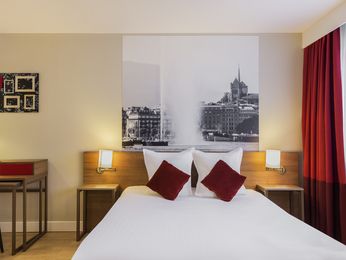Visit the Cathedral of St Peter in Geneva

All our apartments in Geneva
You may be interested in
Your stay at one of the Geneva aparthotels offers a diverse range of accommodations, including cozy 2-person studios with options for twin or double beds, spacious one-bedroom apartments for four, and superior studios. All these apartments are fully equipped with essential amenities such as a bathroom, a flexible lounge area with a work space, and a kitchen that allows you to prepare and dine at your leisure. You'll enjoy access to a telephone, Internet, television, and breakfast options if you prefer, as well as a gym to unwind and release any excess energy. Conveniently accessible via a Genevan public transport bus line, the Adagio Thoiry allows you to immerse yourself in nature while being just on the outskirts of the city.
One of the must-visit locations in Geneva is the impressive St Peter's Cathedral, which boasts a rich history dating back to the 4th century. While exploring this magnificent site, consider staying at one of the Geneva aparthotels nearby for a convenient and comfortable experience. The cathedral itself features a stunning blend of architectural styles and elements from various centuries, including its two mismatched square towers and a vibrant green spire added in the 1800s. Don't miss the chance to discover the archaeological remains beneath the cathedral, where you can walk through Roman mosaics and Early Christian churches, enriched by an audio tour that guides you through the historical timeline.


